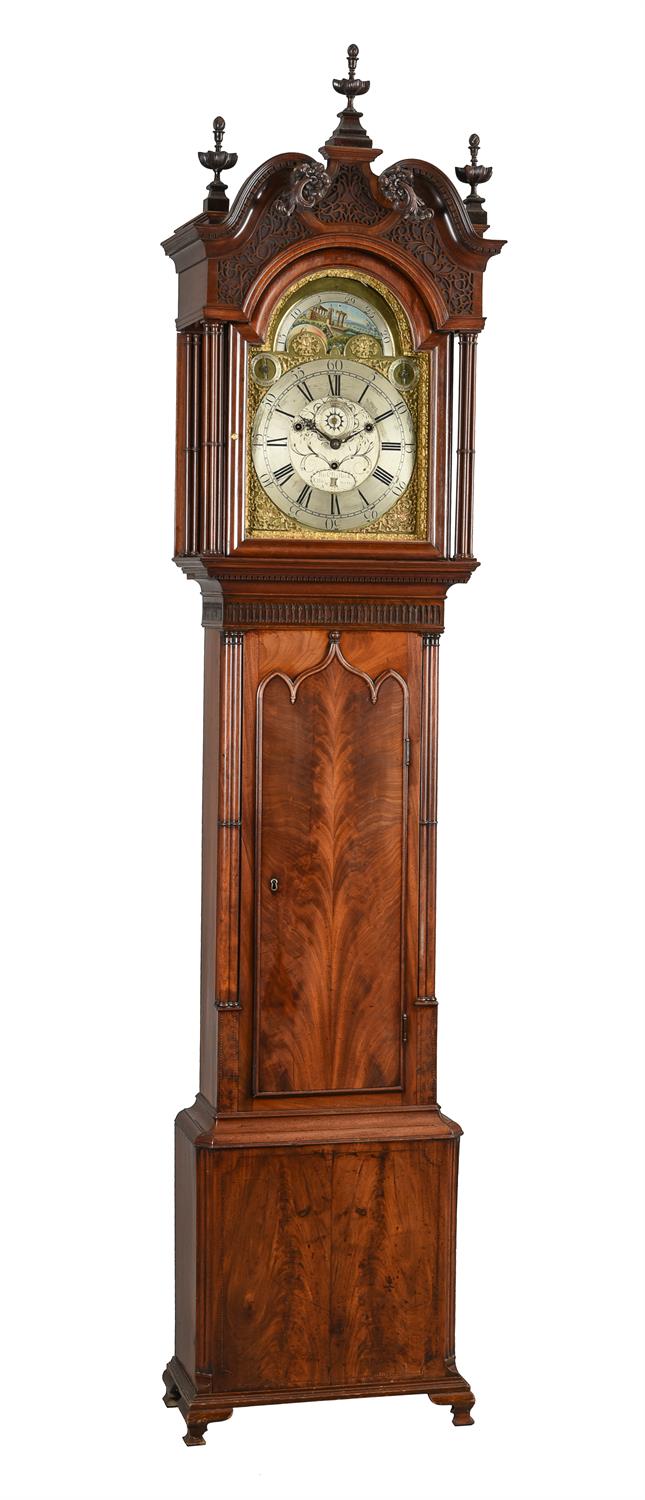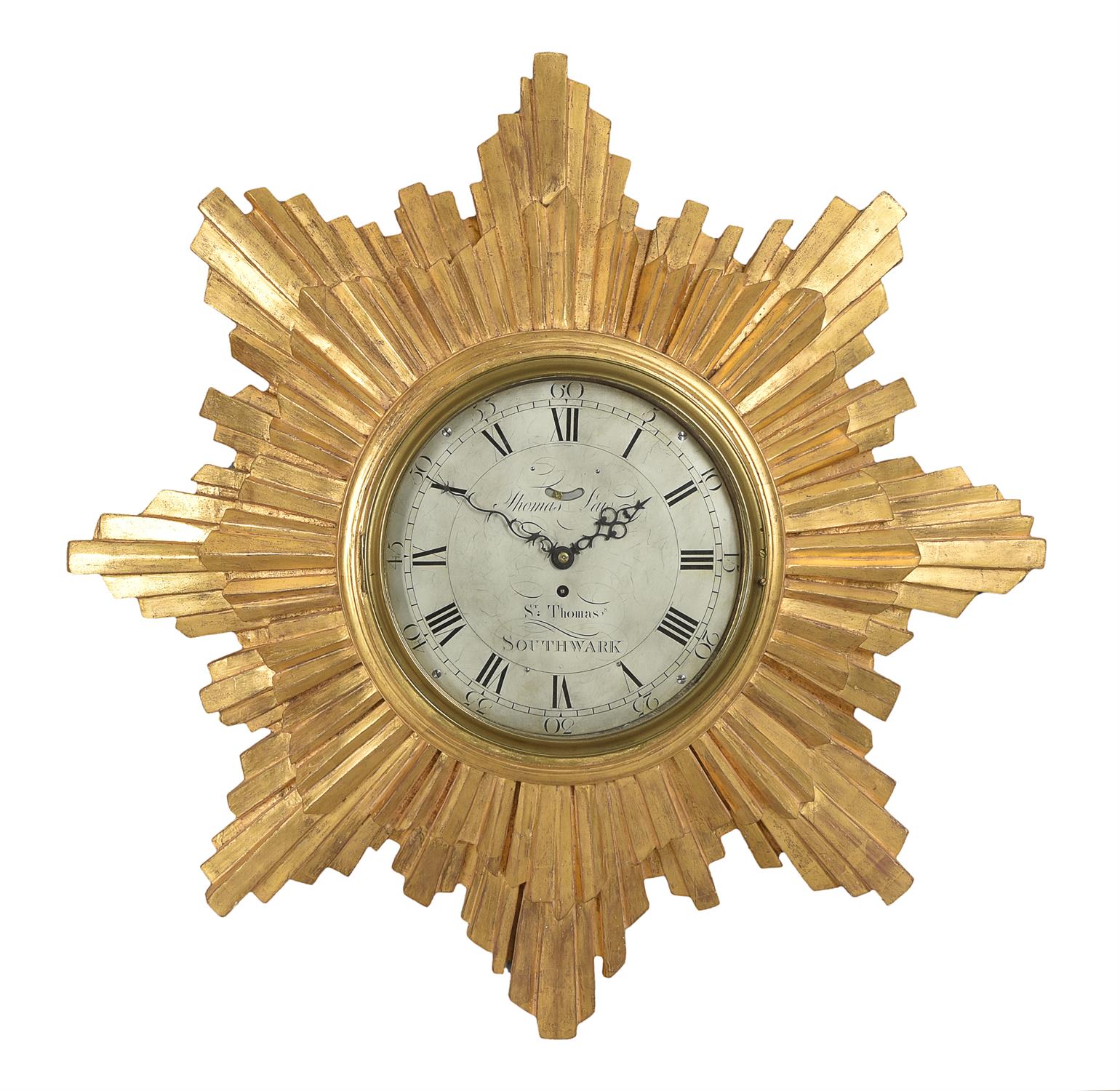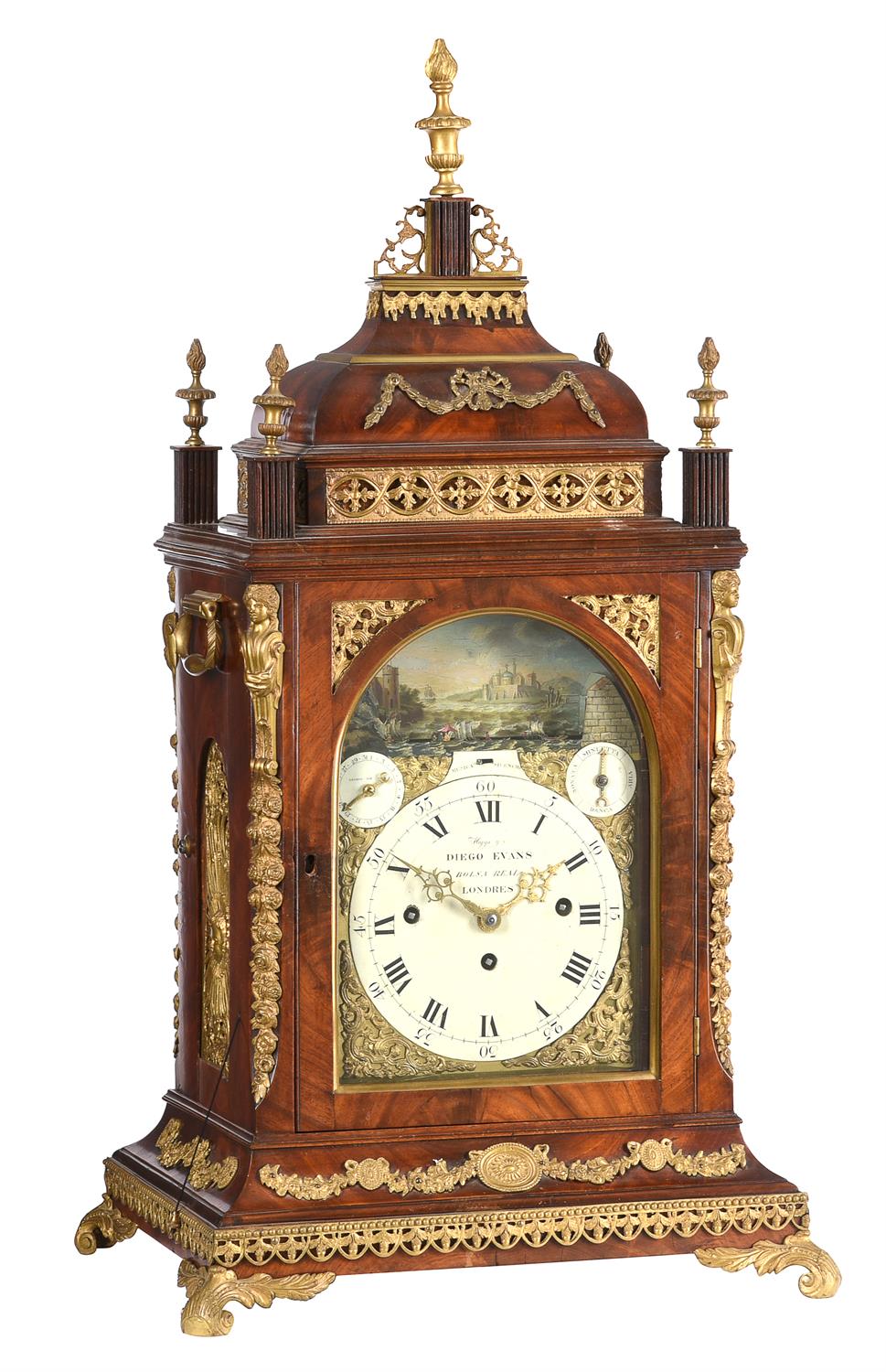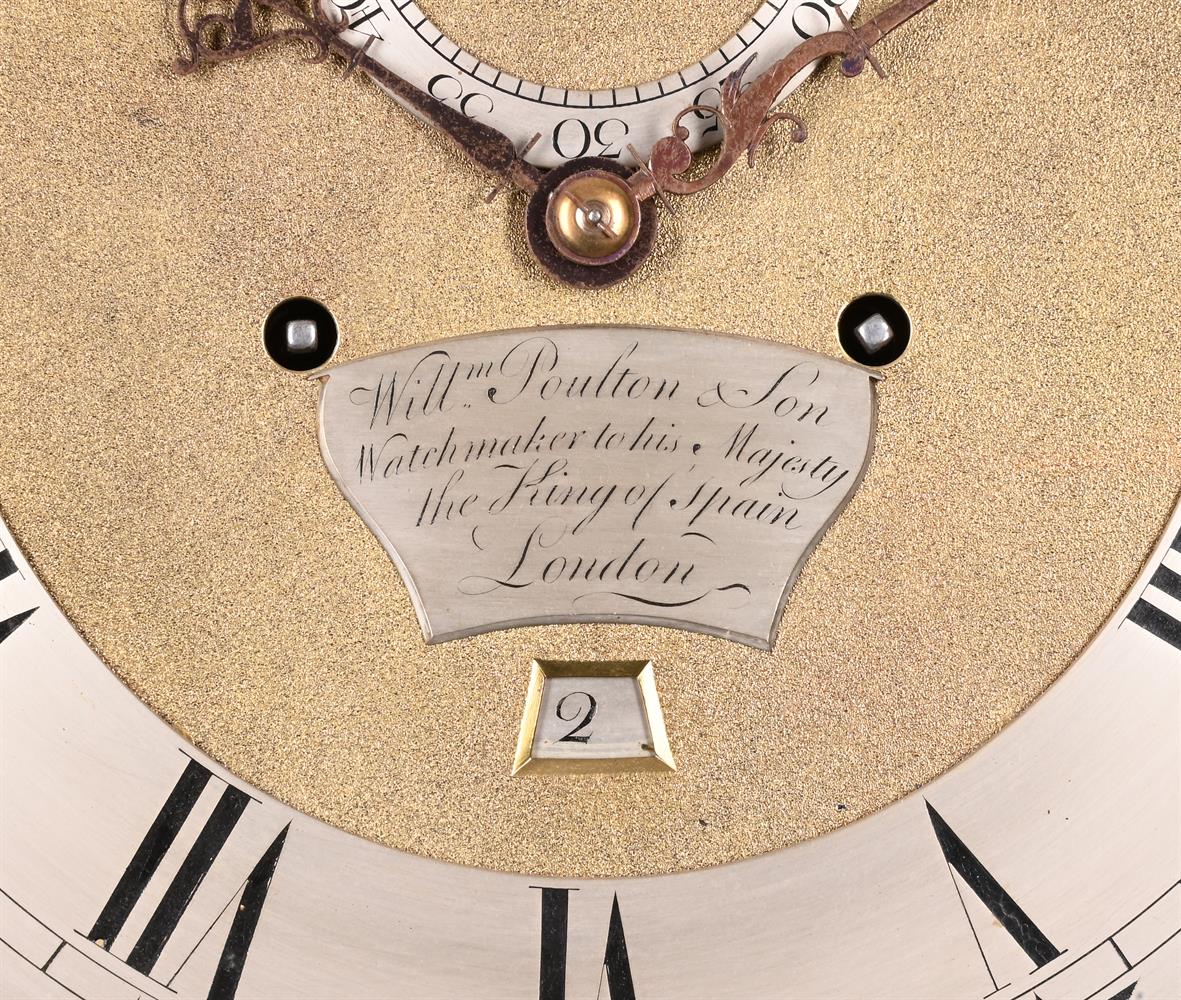A IMPRESSIVE GEORGE III GILT MOUNTED MAHOGANY TWELVE-TUNE MUSICAL TABLE CLOCK OF LARGE PROPORTIONS EARDLEY NORTON, LONDON, CIRCA 1780 The massive eleven pillar triple chain fusee movement playing a choice of twelve tunes via a 14 inch pinned cylinder on thirteen bells with sixteen hammers transversely mounted across the top of the mechanism, before sounding the hour on a further larger bell vertically mounted between the T-shaped plates each measuring 11 inches high by 18.75 inches wide at the projections, the going train with deadbeat escapement incorporating pallets visible through an arched slot cut into the backplate and regulated by 11.75 inch lenticular bob pendulum with holdfast applied just below the signature Eardley Norton London, scribed within a rococo scroll-bordered cartouche within fine rococo scroll engraving covering the entire backplate and incorporating number 1022 stamped to the right hand projection, the 12 inch brass break-arch dial applied with circular slightly convex fired white enamel Roman numeral hour disc signed EARDLEY NORTON, LONDON to centre within inner concentric calendar and with Arabic five minutes beyond the outer minute track, with fine scroll-pierced steel hands and generous rococo scroll cast spandrels to angles, beneath arch applied with a further enamel plate incorporating subsidiary STRIKE/SILENT and CHIME/NOT CHIME selection dials set within fine gilt painted stylised neo-classical scrollwork infill and the upper margin with tune selection panels inscribed MINUET five times, MARCH three times, GAVOT, AIR, DANCE and HORNPIPE, the substantial gilt brass mounted mahogany case with generous pineapple finial over concave-sided platform fronted with a fine scroll-pierced and engraved gilt brass fret over drapery swag decorated upstand, with slender cushion-capped cavetto cornice and break-arch glazed front door bordered with brass fillet mouldings to the dial aperture and with conforming engraved gilt brass sound frets to the upper quadrants, the front angles with substantial brass stop-fluted Ionic columns with gilt caps and bases and the sides with large hinged carrying handles over rectangular panels bordered with complex mouldings and inset with brass fillet-edged arch-glazed apertures (the right hand side opening to access the movement), the rear with matching frets to the concave sided upstand and upper quadrants of the break-arch glazed door flanked by caddy moulded angles, on substantial ogee moulded skirt base applied with musical trophy centred gilt drapery swag mount to front over generous acanthus decorated bracket feet. 96.5 (38ins) high, 66.5cm (26.25ins) wide, 37.5cm (14.75ins) deep. Eardley Norton was thought to have been born into a farming family from Rigsby, Lincolnshire, however he was apprenticed as a clockmaker 25 May 1743 to Robert Dawson of Alford. Latterly he moved to London where he is listed as working at 49 St. John's Street, Clerkenwell between 1760 and 1794. He was member of the Clockmakers' Company being freed in 1770 and remained a member until his death in 1792. He applied for a patent for a new type of striking mechanism for both clocks and watches on 31 August 1771. Norton enjoyed Royal patronage being perhaps best known for his silver mounted four-dial astronomical clock (made in collaboration with James Ferguson F.R.S.) commissioned by George III for Buckingham House (later Palace) which still remains in the Royal Collection (RCIN 30432). He married Mary Swinnerton of Oswestry and later retired to Stonegrove House (no longer existing), Little Stanmore, Middlesex, in the parish of Whitchurch. On his death, his business was taken over by the partnership of Gravell and Tolkien. He is buried at St. Lawrence's church in Little Stanmore. A related (albeit smaller) musical movement is illustrated and discussed in Ord-Hume, Arthur W.J.G. The MUSICAL CLOCK on pages 250-51 (plate XII/10) where it is noted that Eardley Norton was one of a small number of makers wh
A IMPRESSIVE GEORGE III GILT MOUNTED MAHOGANY TWELVE-TUNE MUSICAL TABLE CLOCK OF LARGE PROPORTIONS EARDLEY NORTON, LONDON, CIRCA 1780 The massive eleven pillar triple chain fusee movement playing a choice of twelve tunes via a 14 inch pinned cylinder on thirteen bells with sixteen hammers transversely mounted across the top of the mechanism, before sounding the hour on a further larger bell vertically mounted between the T-shaped plates each measuring 11 inches high by 18.75 inches wide at the projections, the going train with deadbeat escapement incorporating pallets visible through an arched slot cut into the backplate and regulated by 11.75 inch lenticular bob pendulum with holdfast applied just below the signature Eardley Norton London, scribed within a rococo scroll-bordered cartouche within fine rococo scroll engraving covering the entire backplate and incorporating number 1022 stamped to the right hand projection, the 12 inch brass break-arch dial applied with circular slightly convex fired white enamel Roman numeral hour disc signed EARDLEY NORTON, LONDON to centre within inner concentric calendar and with Arabic five minutes beyond the outer minute track, with fine scroll-pierced steel hands and generous rococo scroll cast spandrels to angles, beneath arch applied with a further enamel plate incorporating subsidiary STRIKE/SILENT and CHIME/NOT CHIME selection dials set within fine gilt painted stylised neo-classical scrollwork infill and the upper margin with tune selection panels inscribed MINUET five times, MARCH three times, GAVOT, AIR, DANCE and HORNPIPE, the substantial gilt brass mounted mahogany case with generous pineapple finial over concave-sided platform fronted with a fine scroll-pierced and engraved gilt brass fret over drapery swag decorated upstand, with slender cushion-capped cavetto cornice and break-arch glazed front door bordered with brass fillet mouldings to the dial aperture and with conforming engraved gilt brass sound frets to the upper quadrants, the front angles with substantial brass stop-fluted Ionic columns with gilt caps and bases and the sides with large hinged carrying handles over rectangular panels bordered with complex mouldings and inset with brass fillet-edged arch-glazed apertures (the right hand side opening to access the movement), the rear with matching frets to the concave sided upstand and upper quadrants of the break-arch glazed door flanked by caddy moulded angles, on substantial ogee moulded skirt base applied with musical trophy centred gilt drapery swag mount to front over generous acanthus decorated bracket feet. 96.5 (38ins) high, 66.5cm (26.25ins) wide, 37.5cm (14.75ins) deep. Eardley Norton was thought to have been born into a farming family from Rigsby, Lincolnshire, however he was apprenticed as a clockmaker 25 May 1743 to Robert Dawson of Alford. Latterly he moved to London where he is listed as working at 49 St. John's Street, Clerkenwell between 1760 and 1794. He was member of the Clockmakers' Company being freed in 1770 and remained a member until his death in 1792. He applied for a patent for a new type of striking mechanism for both clocks and watches on 31 August 1771. Norton enjoyed Royal patronage being perhaps best known for his silver mounted four-dial astronomical clock (made in collaboration with James Ferguson F.R.S.) commissioned by George III for Buckingham House (later Palace) which still remains in the Royal Collection (RCIN 30432). He married Mary Swinnerton of Oswestry and later retired to Stonegrove House (no longer existing), Little Stanmore, Middlesex, in the parish of Whitchurch. On his death, his business was taken over by the partnership of Gravell and Tolkien. He is buried at St. Lawrence's church in Little Stanmore. A related (albeit smaller) musical movement is illustrated and discussed in Ord-Hume, Arthur W.J.G. The MUSICAL CLOCK on pages 250-51 (plate XII/10) where it is noted that Eardley Norton was one of a small number of makers wh















Try LotSearch and its premium features for 7 days - without any costs!
Be notified automatically about new items in upcoming auctions.
Create an alert